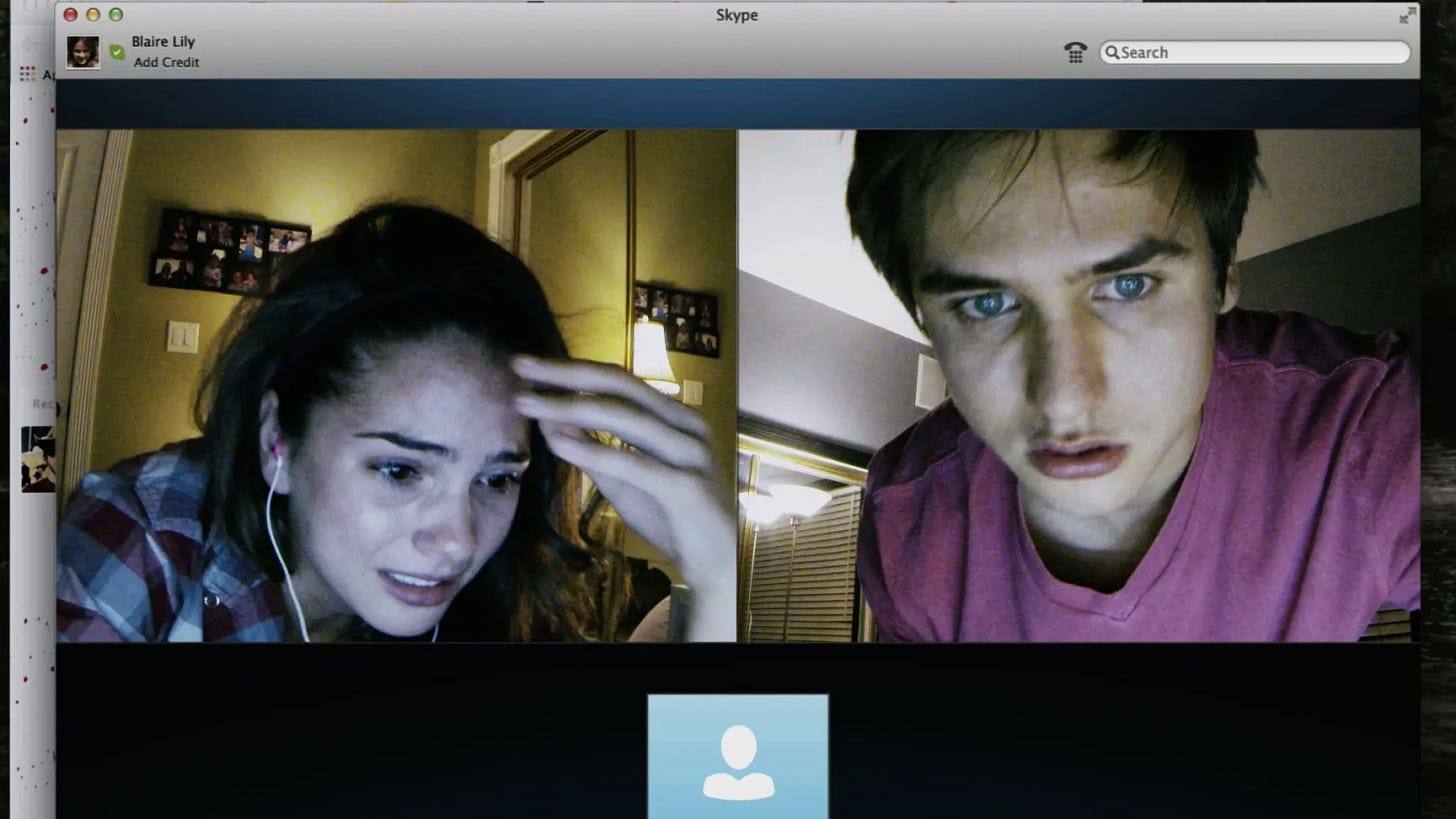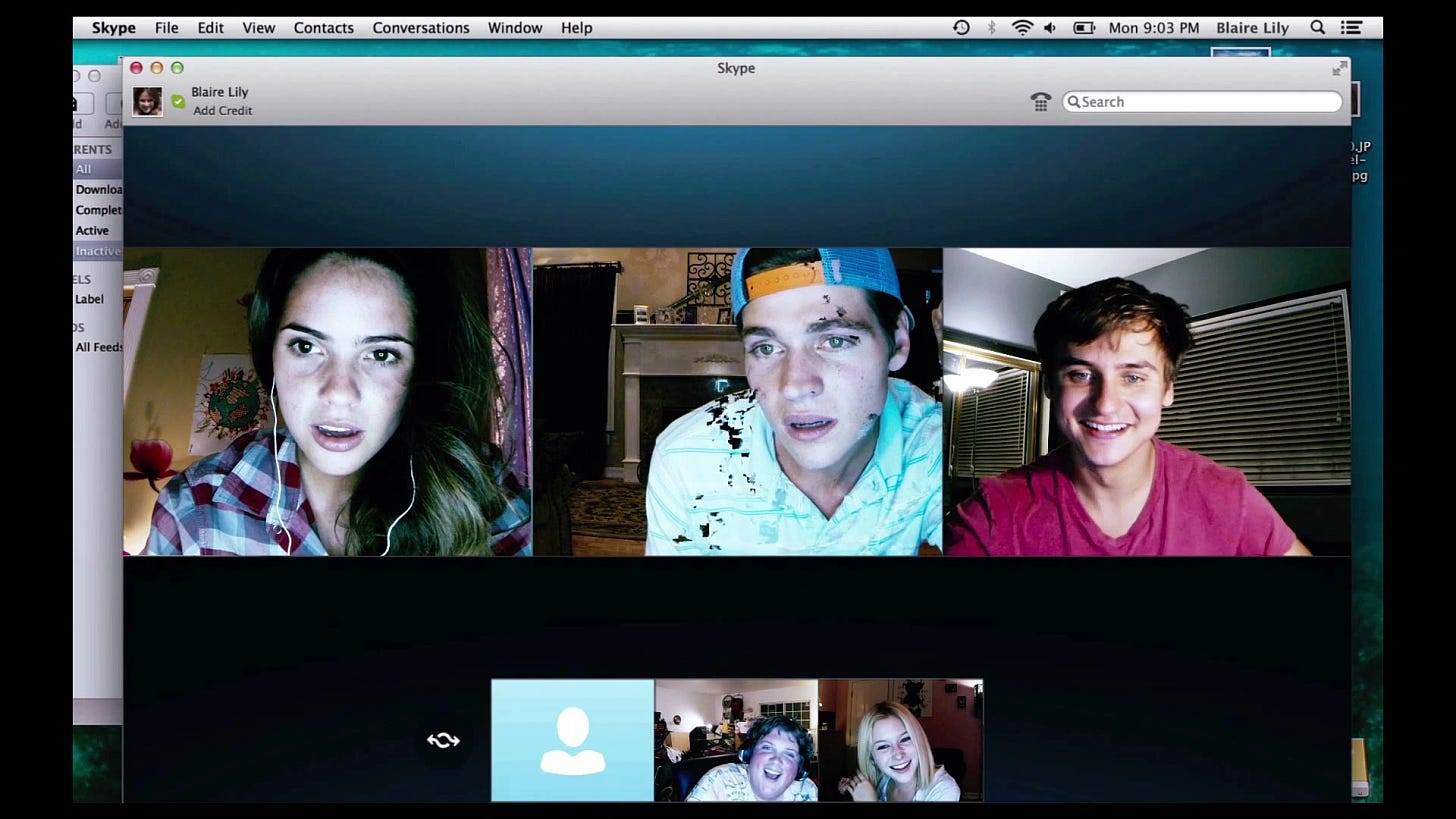The New Cult Canon: 'Unfriended'
Through a conceit that confines the action to a teenage girl's monitor desktop, this horror film does its part to reinvent the medium for the masses.
“What u’ve done will live here forever.” — billie227, Unfriended
Here at The Reveal, we strongly endorse seeing as many films as possible on the big screen, where you can immerse yourself fully and without distraction in some grand (or even willfully mediocre) vision that home viewing could never quite replicate. And yet, a movie theater is not the right place to see the 2015 horror movie Unfriended, nor is that giant 4K television you might have mounted on the living room wall. The ideal setting is your computer monitor, where even nine years later, the cluttered virtual desktop on which the film takes place still looks like the average person’s computer screen and the clicks of a cursor mirror the way we zip around between browser tabs, social media apps, and instant messages. For as much as the film borrows from the DIY, “found footage” aesthetic of The Blair Witch Project and its digital descendants, no docu-fiction could ever approximate its formal uncanniness.
You could dismiss Unfriended as an inevitable piece of gimmickry, the natural manifestation of a period when filmmakers are trying to come to terms with our relationship to technology. There’s not much distance between, say, the hitch-stepped figure that emerges from the screen in Kiyoshi Kurosawa’s Pulse and the ghost-in-the-Skype-machine that wreaks havoc in Unfriended. Yet there’s a significant difference between approximating the images we create and download on our computers and devices, and limiting an entire film to whatever emerges on a single character’s desktop. For one, what do you call the “direction” that director Levan Gabriadze has done here? Footage has been blocked and staged, and actors have been coaxed into giving their performances, but the arrangement of this footage isn’t even comparable to the video inserts of Peter Greenaway’s Prospero’s Books. The frames reflect the futzing of Final Cut Pro in the editing room more than traditional, on-camera mise-en-scène.
In a piece he wrote for me for Oscilloscope’s Musings called “‘Unfriended’ and the Slippery Definition of a Film Director,” Mike D’Angelo put it this way:
My gut feeling is that the film is brilliantly directed, by a Georgian-Russian filmmaker named Levan Gabriadze. But it’s hard to say for sure, because few of the usual associations we make with movie directors at work apply in this particular context. Even after watching and reading multiple interviews with Gabriadze (and with the film’s screenwriter, Nelson Greaves), it’s not clear to me how much of Unfriended was shot and how much was more or less created in post-production. Nor am I sure that the distinction matters.
Mike goes on to write about the cursor being the “protagonist” of Unfriended, which may not be strictly true—the Final Girl clicking around the desktop, Blaire Lily (Shelley Hennig), channels the frantic, tearful Heather Donahue in Blair Witch—but does suggest where our eye is directed. In a film loaded with sly commentary on internet life, one the darkest jokes comes right at the beginning, when we are presented with the following prompt: “Warning — Laura Barns suicide might contain content not suitable for all ages. By clicking on CONTINUE you confirm that you are 18 years and over.” The word “continue” doesn’t even have to be in capital letters to make its allure irresistible, reflecting as it does the ease with which we can access horrifying footage on the web. In 2023, bumping into footage of graphic pornography or school shootings or war-zone videos is such a common occurrence on social media that we should feel lucky to have any content warnings at all.
Blaire’s desktop is a familiar jumble of JPEGs and factory-installed icons for Chess and a Dictionary, along with open applications for Skype, iMessage, and Spotify as well as a Chrome browser with tabs for her inbox, Tumblr, Forever 21 and Free People, the MTV Teen Wolf series, and a Johnny Cash page. (Hat tip to the millennials for respecting their musical elders here.) Though some of those entities are in a diminished state nine years, like Tumblr, it’s never been more possible to believe that Skype is a cursed, virus-ridden medium for malevolent spirits from beyond the grave. Whether or not it counts as “direction,” there’s a great attention here to how intuitively we navigate our screen-worlds, as Blaire deftly clicks around from private messages to group Skype chats to browser videos to mood-setters on her Spotify playlist.
Keep reading with a 7-day free trial
Subscribe to The Reveal to keep reading this post and get 7 days of free access to the full post archives.





